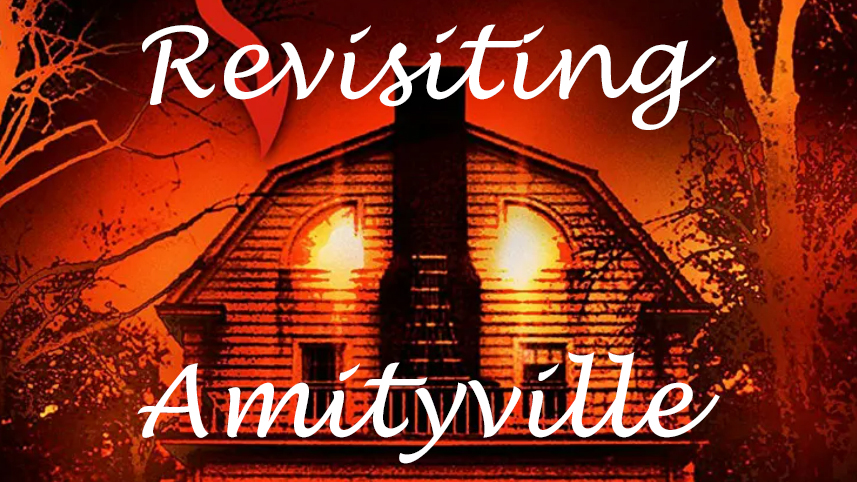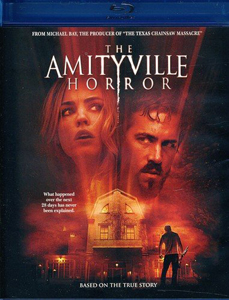After a string of direct-to-video “Amityville” movies, I was excited about the bigger budget, high production values and name cast of “The Amityville Horror” remake (2005), the saga’s first theatrical release since 1983. It does boast those things, but is short on elements of good horror, making the final product surprisingly mediocre.
The first problem is we get even further from the “true story.” This film is written by Scott Kosar … based on the screenplay by Sandor Stern … based on the book by Jay Anson … based on what was recounted to him by George and Kathy Lutz and other research. It immediately demonstrates it’s about as interested in truth as the Coen Brothers’ “Fargo,” as the 1974 DeFeo murder spree ends with Ronnie shooting his kid sister as she cowers against a wall.
Part of the creepiness of the real-world DeFeo mystery is that every family member was shot in their bed, which doesn’t seem possible considering that the noise of rifle blasts should’ve woken people up. (Bizarrely, this film emphasizes that point in a newscaster voiceover, even though it contradicts the flashback.)

“The Amityville Horror” (2005)
Director: Andrew Douglas
Writers: Scott Kosar (screenplay), Sandor Stern (original movie), Jay Anson (book)
Stars: Ryan Reynolds, Melissa George, Jimmy Bennett
On Tuesdays this summer, RFMC is looking back at selected films in the “Amityville” series.
Going bigger but not better
Having sacrificed the “true story” mood and never earning it back, “The Amityville Horror” becomes “The Amityville Jump Scare” in Naughties fashion when the Lutzes move into the bargain-priced murder house. These aren’t earned jump scares, but rather sudden blasts of music combined with sudden images of a ghost or demon; flinchy rather than scary. Composer Steve Jablonsky does yeoman’s work, but even he includes sudden screeches in his score.
“Amityville” 2005 goes big at every point the 1979 original went small. One could fairly argue it goes “better” in addition to “bigger” – but only on a case-by-case basis; the missing horror mood hurts the overall film too much.
The casting director draws from 2005 Sexiest Men/Women and Maxim Hot 100 lists, rather hilariously picking Ryan Reynolds (and his abs, which should be top-billed) as George Lutz, Melissa George as wife Kathy and Rachel Nichols as the babysitter. Makeup, hair and wardrobe do nothing to dress them down into average 1975 Long Island folks.
Reynolds draws from Jack Nicholson in “The Shining” more than James Brolin in the O.G. “Amityville,” pumping up the idea that the house is driving George crazy. He spends increasing time on a couch in the basement, closer to the Indian burials that cause his low-grade possession.
George’s cruel treatment of his three stepkids – including Chloe-Grace Moretz in one of those “And introducing …” credits that turns out legit – falls into the range of “hard to watch” more so than compellingly horrific.

Too slick to be scary
“Amityville” 2005 has one harrowing set piece. Chloe-Grace’s Chelsea stands atop the peak of the deeply slanted roof, and the wide angle shows the ocean and horizon beyond her. Although director Andrew Douglas of course uses film trickery rather than putting the 8-year-old actress in danger, it’s vertigo-inducing and viscerally scary.
Also in a vacuum, Nichols’ turn as a sexy, pot-smoking and supremely unqualified babysitter – whose idea of a good time is to tell the two boys about the DeFeo murders in their rooms (in their very beds, she claims) – is amusing.
From a practical screenwriting standpoint, Kosar (whose strong credits include the 2003 “Texas Chainsaw Massacre” remake) corrects the original’s meandering priest B-plot and gives Father Callaway (Philip Baker Hall) a tighter arc. He also excises the Lutz’s friends, further drifting toward that “Shining” vibe of isolation; not a bad instinct.
I could nitpick some things. Since the film had to rebuild the Amityville house (in Wisconsin, rather than the original New Jersey), why did the designers rebuild it wrong, so the creepy facade (with the windows that resemble eyes) is now on the front instead of the side?
But in the end, “Amityville Horror” 2005 – despite improving on many pieces of the original – is a worse film because it doesn’t develop a scary mood. It’s Michael Bay-produced product. The original is rough and narratively sloppy; its low-budget, non-studio nature is evident. Yet, when telling a horror story that (at least partially) happened in real life, it turns out that less is more.

